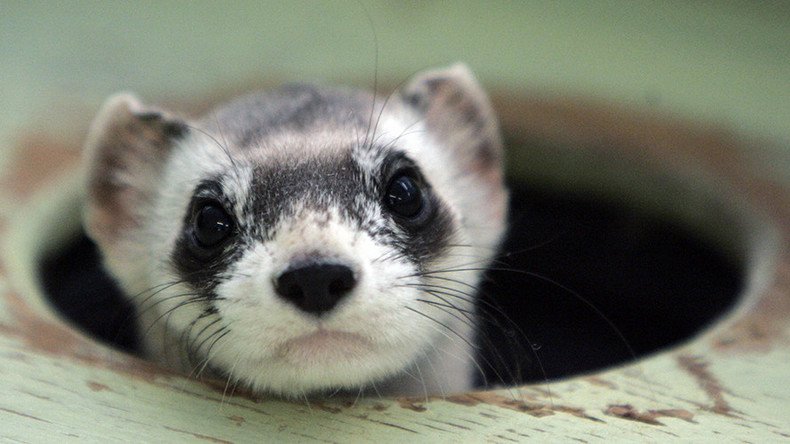Vaccine-laden M&M’s to be distributed via drone for endangered ferrets

A plague is threatening the already endangered black-footed ferret, leaving the US Fish and Wildlife Service with only one option. Load up a “glorified gumball machine” on a drone to fire out vaccine-infused peanut butter M&Ms to help the fuzzy critters.
The US Fish and Wildlife Service (USFWS) is on a mission. By using drones to distribute candy covered in vaccines in the black-footed ferrets’ habitat, the federal agency hopes to stop the spread of a disease that has ravaged prairie dog populations and poses risks to other species.
To combat the spread of the sylvatic plague at the UL Bend Wildlife Refuge in central Montana, the USFWS plans to trick the ferrets and prairie dogs into getting vaccinated, with the help of a drone that can shoot out M&M candies in three different directions at once.
Near-total ivory ban issued in US to protect endangered African elephants https://t.co/w3yu4hq4sapic.twitter.com/ogG8Dpnjh9
— RT America (@RT_America) June 3, 2016
The necessity in medicating wild prairie dogs actually goes beyond just the burrowing rodents themselves. Prairie dogs are known as a “keystone” species, meaning multiple species depend on them, and their removal from an ecosystem could be extremely detrimental.
Anyone familiar with giving an animal medicine understands that the only way to do it is to trick them. That task becomes difficult when handling wild animals – especially handling them across a span of over 20,000 acres like in UL Bend.
This is where the drones come in. Other attempts to vaccinate prairie dogs have had large logistical issues. Randy Machett, a USFWS biologist, told the Guardian: “We dropped the vaccine out of a bag while walking around, but that’s very hard to do over thousands of acres.”
“Spraying burrows with insecticide to kill the fleas is also labor intensive and not a long-term solution. So we are working with private contractors to develop equipment to drop the vaccine uniformly across an area, rather than one hog getting to eat a big pile of them,” Machett said.
By attaching a “glorified gumball machine” to a drone, USFWS employees can use GPS navigation to drop vaccines every 30 feet (9 meters). The vaccine itself was created with a modified fish bait machine that smears M&Ms in vaccine-filled peanut butter.
A dye is also added to the mix, so that the animals’ stained whiskers show who’s been feasting on the sweet medicine. According to Machett, prairie dogs find the bait “delicious.”
While the black-footed ferret is not the target recipient of the vaccine, they stand to gain the most with more prairie dogs being vaccinated. For the black-footed ferret, the loss of prairie dogs would be devastating, as they are one of the ferret’s largest food sources – accounting for as much as 90 percent of their diet. After killing the prairie dogs, the ferrets even use their burrows.
The black-footed ferret is already in a precarious position. They’ve already nearly gone extinct once in the 1980s, but thanks to breeding in captivity, there are about 300 remaining in the US.
While Machett told the Guardian that most of the feedback the project has received has been “highly supportive,” some farmers expressed displeasure with the vaccination plan, because both prairie dogs and ferrets are considered pests.
The trial is set to begin on September 1, pending final USFWS approval. Depending on the results of the trial in Montana, ferret populations in Arizona and Colorado may also begin receiving some assistance from the sky.
“It is the fastest, cheapest way to distribute the vaccine,” Machett said. “We are hopeful this oral vaccine will be used to mitigate plague sites and treat tens of thousands of acres each year.”
US govt agency stopped 0 of 88,000 projects posing potential risk to endangered specieshttps://t.co/HeSyryh12Cpic.twitter.com/0EIpIU5PUb
— RT America (@RT_America) December 15, 2015












